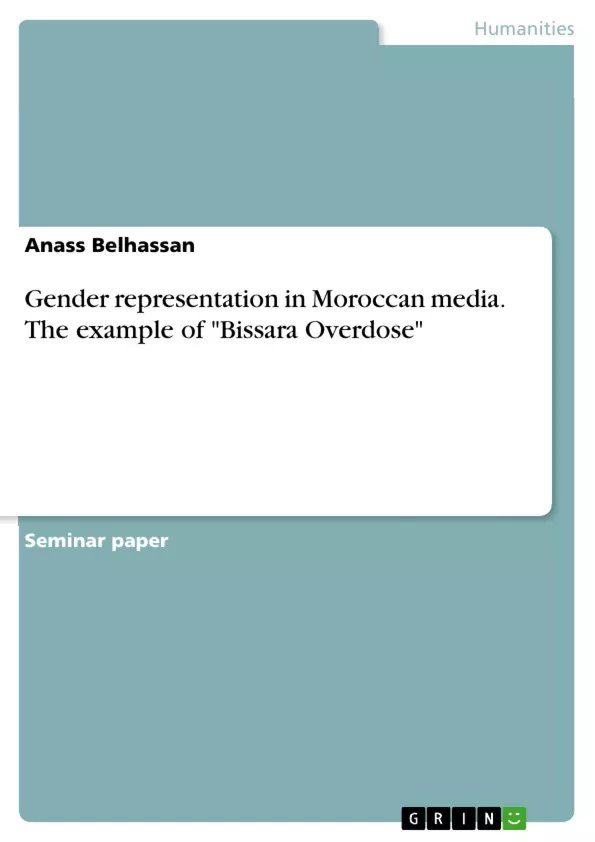Media texts are constructions, conveying several meaningsEach media text contains intentions behind it – for example to serve certain parties or agendas, to shed the light on minorities, and so on. A passive consumer of media will not be able to notice or realize the intentions behind media texts. Media texts include representations of people, thinks and ideas. It is wrong to consider representations as realities. Rather, producers select only aspects that are useful in achieving their objectives.
This paper is investigating how Hicham Lasri ironically represents gender in his web series in the same way Moroccan patriarchal discourse perceives it; his sense of irony and sarcasm exposes the defects of gender representation as well as gender perception in a Moroccan context. "Bissara Overdose" is selected as a sample. The reason behind selecting it is its impact on social media; the episodes were shared on several Facebook pages; the feedback was surprisingly positive for a patriarchal environment. Episode two of "Bissara Overdose" even won the price of best video in Maroc Web Awards 2017. "Bissara Overdose" is a text that aims at deconstructing gender stereotypes in gender representation.
Inhaltsverzeichnis (Table of Contents)
- Introduction:
- Media text:
- Rhetorical analysis
- Semiology
- Gender representation:
Zielsetzung und Themenschwerpunkte (Objectives and Key Themes)
This paper examines how Hicham Lasri's web series, specifically "Bissara Overdose," ironically portrays gender within a Moroccan context. The author analyzes the series' representation of gender through the lens of Moroccan patriarchal discourse, highlighting the show's use of irony and sarcasm to critique gender stereotypes. The paper explores how the series has resonated with audiences and its impact on social media.
- Gender representation in Moroccan media
- Deconstruction of gender stereotypes
- The impact of media on social perceptions
- The use of irony and sarcasm in media
- The role of patriarchal discourse in shaping media content
Zusammenfassung der Kapitel (Chapter Summaries)
- Introduction: The introduction sets the context for the analysis, arguing that media texts are constructed with specific intentions and that understanding these intentions requires critical analysis.
- Media text: This section introduces the concept of media as a meaning generator and discusses the influence of media in shaping social norms. The author highlights the importance of analyzing media text to understand the intentions behind its creation.
- Rhetorical analysis: This sub-section focuses on the organization of media texts and how rhetoric can be used to manipulate affective responses in audiences.
- Semiology: This sub-section explores semiological principles, specifically the concepts of signs and significance, as they relate to media studies. The author draws upon the works of Ferdinand De Saussure and Charles Sanders Pierce to explain the theoretical framework of semiology.
- Gender representation: This section defines media representation as a constructed image and explores how representations can be used to normalize or categorize people, groups, ideas, and events.
Schlüsselwörter (Keywords)
The key concepts and terms that are central to this paper include gender representation, Moroccan media, patriarchal discourse, irony, sarcasm, social media impact, media analysis, rhetoric, semiology, and deconstruction of stereotypes. These terms highlight the paper's focus on understanding how media constructs gender representations and the potential of media to challenge dominant social norms.
- Citar trabajo
- Anass Belhassan (Autor), 2018, Gender representation in Moroccan media. The example of "Bissara Overdose", Múnich, GRIN Verlag, https://www.grin.com/document/430868



